
Bulimulidae is a taxonomic family of medium-sized to large, air-breathing, tropical and sub-tropical land snails, terrestrial pulmonate gastropod molluscs in the superfamily Orthalicoidea.
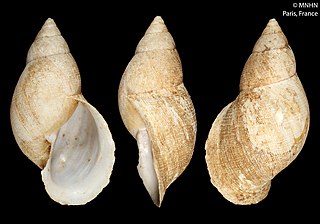
Bulimulus is a genus of small to medium-sized tropical or sub-tropical, air-breathing land snails, pulmonate gastropod mollusks in the subfamily Bulimulinae within the family Bulimulidae.

Megalobulimus is a genus of air-breathing land snail, a terrestrial gastropod mollusk in the subfamily Megalobuliminae within the family Strophocheilidae.

Subulininae is a subfamily of small tropical air-breathing land snails, terrestrial pulmonate gastropod mollusks in the family Achatinidae.
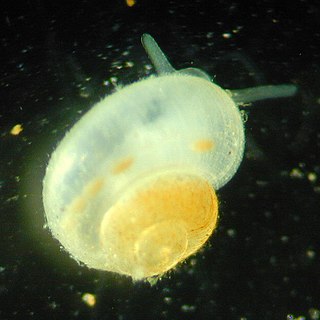
Cochliopidae is a family of small freshwater snails with gills and an operculum, aquatic gastropod mollusks.

Pomatiopsidae is a family of small, mainly freshwater snails, that have gills and an operculum, aquatic gastropod mollusks in the superfamily Truncatelloidea.

Halystina is a genus of sea snails, marine gastropod mollusks in the subfamily Seguenziinae of the family Seguenziidae.
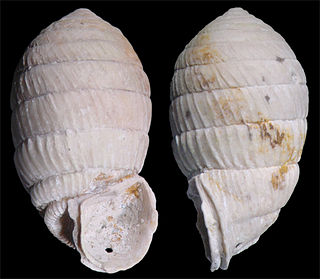
Brasilennea is a fossil genus of small to medium-sized air-breathing land snails, terrestrial pulmonate gastropods in the family Cerionidae. The genus is known only from the Brazilian Paleocene Itaboraí Basin, in Rio de Janeiro. The most characteristic feature of the genus is its two spiral furrows on the body whorl.

Eoborus is a fossil genus of medium-sized air-breathing land snails, terrestrial pulmonate gastropods in the family Strophocheilidae. Eoborus is the oldest fossil record of Strophocheilidae, dating from the Middle Paleocene of Brazil and Uruguay. The Brazilian species, alongside Eoborus charruanus from Uruguay, are the oldest fossil record of the family.

Eoborus rotundus is a fossil species of air-breathing land snail, a terrestrial pulmonate gastropod mollusk in the family Strophocheilidae, from the Paleocene Itaboraí Basin, Brazil. Eoborus rotundus is a small species for the genus Eoborus, and the shell has a more rounded shape than average for the genus, a feature reflected in its species name.

Eoborus sanctijosephi is a fossil species of air-breathing land snail, a terrestrial pulmonate gastropod mollusk in the family Strophocheilidae, from the Paleocene Itaboraí Basin, Brazil. Eoborus sanctijosephi is a large species in the genus Eoborus. Its name makes reference to the place of discovery: the São José de Itaboraí municipality, where Itaboraí Basin is located.
Spipipockia punctata is a species of land snail with an operculum, a terrestrial troglobiont gastropod mollusk in the family Cochliopidae. S. punctata is the type species of the genus Spiripockia.
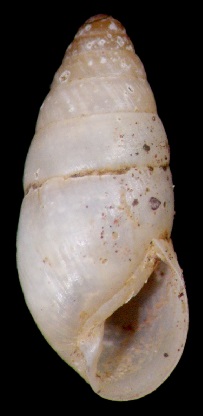
Vegrandinia is a genus of medium-sized air-breathing land snails, terrestrial pulmonate gastropods in the family Achatinidae. The genus name refers to its small size.

Leiostracus is a genus of small to medium-sized neotropical, air-breathing land snails, pulmonate gastropod mollusks in family Simpulopsidae.

Halystina umberlee is a species of very small deep-water sea snail, a marine gastropod mollusc in the family Seguenziidae.
Kora rupestris is a species of tropical air-breathing land snails, a pulmonate gastropod mollusc in the family Bulimulidae.
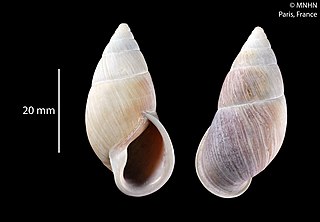
Kora is a genus of tropical air-breathing land snails, a pulmonate gastropod mollusks in the family Bulimulidae.

Kora corallina is a species of a tropical air-breathing land snail, a pulmonate gastropod mollusc in the family Bulimulidae.












